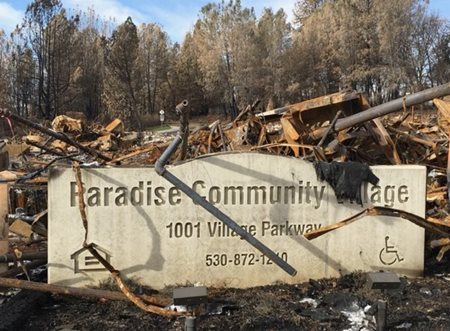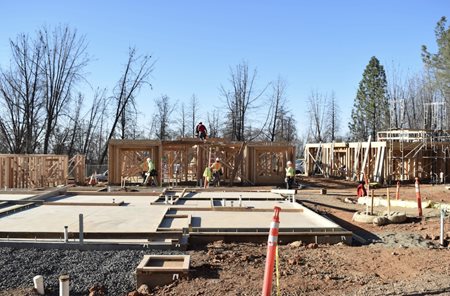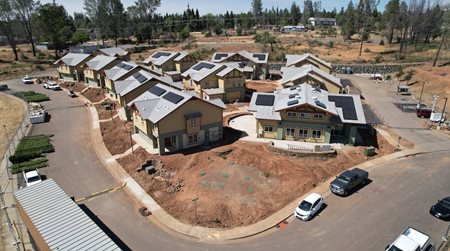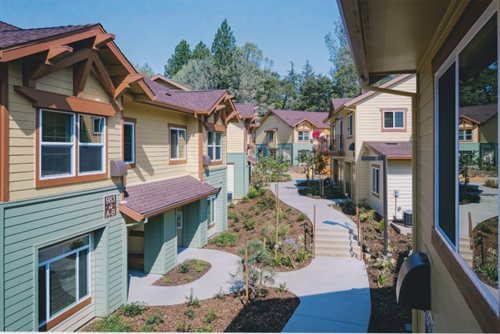David and Linda Kling lived in a two-bedroom home they'd owned for just shy of 18 years. That's where they were when they heard the news broadcast about a fire in the canyon. They gathered a few items for themselves and their pets. At 9:20 p.m., they fled.
"What was normally a 20-minute drive took us five hours," Linda says. "Everyone was evacuating." When they returned home weeks later, there was nothing left. David could smell the melted vinyl from his record collection. His recording equipment was charred beyond recognition.

"After a disaster, housing becomes the No. 1 issue," explains Seana O'Shaughnessy, executive director of CHIP. The fire displaced residents as well as staff, many of whom lost their own homes. During the lengthy rebuilding process, construction crews were hard to come by, too. The region already had an affordability issue, but demand, coupled with the pandemic, caused prices to increase. Meanwhile, families continued dealing with red tape, insurance and trauma.
But there was also resilience, O'Shaughnessy says. "For CHIP, as soon as it happened, we knew we had to be a part of the recovery." With the complex set to be completed last December, they received 250 applications for 35 units, 150 applications from Campfire survivors. Meanwhile, the organization used disaster tax credits to move forward with Creekside Place apartments, with 101 units for older residents, and 15 units of permanent supportive housing for people coming out of homelessness. The project is 78% complete.

The community looks different now. Missing homes. Missing trees. Missing agriculture. "That's part of the lesson we've learned with disaster recovery: Recognizing that the community can't be the same as it was before the disaster. How do you make decisions that allow space for a diverse community? How do you make space for people who have economic disadvantages?"
Colette Curtis, recovery and economic development director for Paradise, says the town lost 10,707 structures in the fire, leaving 1,300 surviving homes. "Only 10% of our residential housing remained." But by the end of August, they had issued 2,296 permits and seen the completion of 1,545 new homes. Most of those were single-family, but the numbers include 252 multifamily homes, including those developed by CHIP. "There's a big role for nonprofit housing organizations in disaster recovery, especially in affordable housing,."

"Our organizations are so well positioned in terms of disaster response and preparedness because they're interconnected with the community," shares Clare Rosenberger, NeighborWorks America's director of real estate programs. "That connectiveness makes a difference, whether it's repair, or getting them into rental units."
Following a Texas hurricane, for instance, a NeighborWorks network organization was able to work with Las Vegas casinos to donate used furniture to a community in need.

As rebuilding in California continues, Paradise officials have talked to other communities who have been through disasters to try to figure out what to expect. The ultimate goal, Curtis says, is to make it possible for anyone who wants to be able to come home to do just that.
O'Shaughnessy's lessons learned from the fire include being intentional about every move they consider. "And you have to have persistence. Little things, like proving loss and accessing funds can be retraumatizing."
Meanwhile, CHIP has worked to increase disaster preparedness for residents and within the organization. "Everyone who moved back to Paradise got an evacuation kit and a reminder to have a plan," she says. The organization also received a grant to cover renters' insurance for residents' first year in Paradise Community Village. The schools are back. And the grocery store."
So are the Klings, who are grateful to have found housing through CHIP. After a disaster like the fire, "I don't think you ever totally emotionally recover," David Kling says. "It helps to have neighbors who have been through the same thing."

